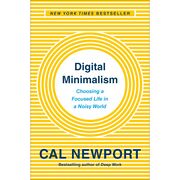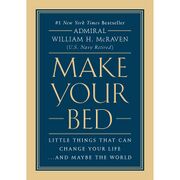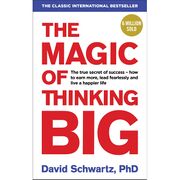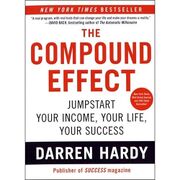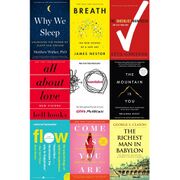Stolen Focus
🍎 Healthy brain food
"Systemic problems require systemic solutions."
— Johann Hari, Stolen Focus (2022)
Introduction
| Stolen Focus | |
|---|---|
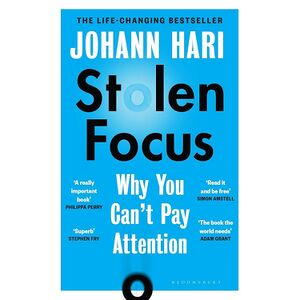 | |
| Full title | Stolen Focus: Why You Can't Pay Attention |
| Author | Johann Hari |
| Language | English |
| Subject | Attention; Distraction (psychology); Technology and society |
| Genre | Nonfiction; Psychology |
| Publisher | Bloomsbury Publishing |
Publication date | 6 January 2022 |
| Publication place | United Kingdom |
| Media type | Print (hardcover, paperback); e-book; audiobook |
| Pages | 352 |
| ISBN | 978-1-5266-2022-4 |
| Goodreads rating | 4.2/5 (as of 5 November 2025) |
| Website | stolenfocusbook.com |
📘 Stolen Focus is a nonfiction book by Johann Hari about an attention crisis shaped by ad-driven technology, work stress, and other systemic forces. The UK hardback was published by Bloomsbury on 6 January 2022 (352 pp.; ISBN 978-1-5266-2022-4). [1] The book draws on interviews with researchers and sets out twelve systemic “causes” of attention loss. [2] Hari argues the problem is not simply personal discipline but structural, calling for collective solutions alongside individual habits. [3] The narrative blends reporting with personal episodes—such as a months-long digital detox—and reads in an accessible, magazine-style register. [4] Its UK hardback outline spans fourteen chapters arranged around “causes” and early solutions. [5] Bloomsbury markets the title as a Sunday Times and New York Times bestseller. [1] It also won Porchlight’s 2022 Business Book of the Year and appeared on the Financial Times “Best books of 2022: Politics.” [6][7]
Chapter summary
This outline follows the Bloomsbury hardback edition (2022; ISBN 978-1-5266-2022-4).[1][5]
🚀 1 – Cause One: The Increase in Speed, Switching and Filtering.. In Boston, I stand at a Target counter asking for a phone that can’t get online, then leave with nothing and later order a Jitterbug—an emergency-only handset marketed to older adults—so I can vanish from the web for three months. I borrow my friend Imtiaz’s internet-dead laptop—now essentially a 1990s word processor—and give my new number to just six people. On a May ferry to Provincetown, Cape Cod, I watch the Pilgrim Monument appear on the horizon and feel the tug to check a phone I no longer carry. In town, the estate agent Pat removes the modem from my beach apartment, I cancel the TV packages, and I start walking the long, empty shoreline instead of scrolling. Friends keep quoting Apple’s Apple’s Screen Time as they daydream about the hours they’d win back; they cite that the average American spends around three hours and fifteen minutes per day on the phone and taps or swipes it 2,617 times every twenty-four hours. I lean on “pre-commitment,” the Ulysses trick of binding myself against temptation, and think of Yale psychologist Molly Crockett’s 2013 experiment where men who pledged in advance waited longer for the stronger reward than those relying on willpower in the moment. Provincetown’s quiet slows the internal metronome I had set to breaking-news speed, and sleep finally returns. The calm is fragile: even a ping on the ferry had made my hand twitch toward an absent device. The more I remove velocity and novelty, the more my mind stops skimming and sinks into a single thing. Modern life pushes constant speed, switching, and filtering, which burns attention in continual reorientation; rapid switching loads working memory and attentional control, so we process superficially and remember less. When the speed drops, sustained focus becomes thinkable again.
🎯 2 – Cause Two: The Crippling of Our Flow States.. In Claremont, California, I speak with psychologist Mihaly Csikszentmihalyi, who spent decades mapping flow—the deep, effortful absorption that makes hours snap like minutes—and I ask where ordinary people can still find it. He describes the entry conditions in plain terms: pick one goal, make sure it truly matters to you, and work at the edge of your abilities. I see why my scattered, notification-laced days almost never meet those terms, and why the long, device-free blocks in Provincetown briefly did. Flow is not a warm bath; it is a demanding channel that forms when challenge meets skill under clear constraints. Open tabs, open-plan chatter, and push alerts rupture that channel; each interruption knocks you to the riverbank and you must wade back in. When work becomes a ping-driven jumble, even meaningful projects feel thin because attention never crosses the threshold where effort turns into traction. The fix isn’t to strip life of stimulation and wait; it is to design periods where one valued target monopolizes attention long enough for momentum to build. In practice that means guarding time, setting finite scopes, and stepping away from metrics that reward constant responsiveness. Flow is the highest form of focus, yet the environments we inhabit reliably prevent it. It aligns motivation and attention around a single, stretching task, but repeated interruptions reset that alignment and make momentum expensive to rebuild.
😪 3 – Cause Three: The Rise of Physical and Mental Exhaustion.. At Harvard Medical School, sleep scientist Charles Czeisler walks me through how sleep loss shreds attention, from “attentional blinks” to the microsleeps that drop out parts of the brain while you are technically awake. Away from devices for weeks, my own sleep drifts toward sunrise and sunset, and I feel how rest quietly restores vigilance in a way no hack can. In Minneapolis, Professor Roxanne Prichard describes students dragging through early classes on caffeine and anxiety, treating exhaustion as normal until their grades and memory show the bill. I hear how parents, shift workers and teenagers are all squeezed by schedules that ignore circadian biology, then scolded for failing to focus. The culture treats tiredness as a moral failure; the lab reads it as impaired cognition. When you are depleted, you seek jolts—sugar, feeds, alerts—that promise quick clarity and deliver only more jitter. The cycle is self-perpetuating: fatigue breeds distraction, distraction extends wakefulness, and shortened sleep deepens the next day’s fog. Real repair comes from structural shifts—later school start times, sane working hours, darker nights—not just personal grit. Attention withers when bodies are run down; tired brains default to scanning, not sustained engagement. Sleep debt weakens executive control and memory consolidation, so even earnest effort slides off the mind; restore rest and the capacity for deep focus returns.
📚 4 – Cause Four: The Collapse of Sustained Reading.. In Provincetown on Cape Cod, I tried to sink into Dickens and felt my eyes skitter across the page, drifting back to pings and side-quests that rewarded speed over depth. The struggle mirrors a broader decline in deep reading that scholars such as Maryanne Wolf, Naomi Baron, and Nicholas Carr have tracked as screens nudge us toward skimming and fragmented attention. At the University of Toronto and York University, Keith Oatley and Raymond Mar adapted the Author Recognition Test to compare exposure to fiction and non-fiction, finding that regular immersion in narrative fiction correlates with stronger empathy and theory-of-mind performance. Their approach—recognizing authors’ names rather than self-reporting habits—offers a cleaner way to measure reading and cut through wishful thinking. In classrooms and labs, this work suggests that sustained, narrative attention trains us to simulate other minds, a skill that erodes when reading time is chopped into alerts and swipes. Sociologists have even warned that reading in the twenty-first century could become “an increasingly arcane hobby,” a sign of how cultural habits tilt away from long-form text when platforms privilege brevity. Twitter’s 280-character bursts and the demand for instant takes stack the deck against the slow digestion complex arguments require. Time-use diaries and national surveys report fewer minutes with books and less literary reading for pleasure, which tracks with the shrinking stretches most people can give to a single page. The pattern is not about individual willpower so much as a media environment that accelerates, interrupts, and makes depth feel inefficient. When deep reading collapses, we lose one of the few daily practices that strengthens sustained attention and social understanding; in its place, skimming leaves us fluent in headlines but thin in insight.
💭 5 – Cause Five: The Disruption of Mind-Wandering.. On a bus in Coutances in 1908, Henri Poincaré stepped up and—without effort—saw that the transformations behind his Fuchsian functions matched non-Euclidean geometry, the kind of breakthrough that arrives off-duty. A generation earlier, William James had cast attention as a “spotlight,” but research now shows the brain’s default networks do crucial work when that light dims. Marcus Raichle and Nathan Spreng link mind-wandering to the default mode network, while Jonathan Smallwood argues the picture is more complex; either way, the idle mind is doing real cognitive labor. Jonathan Schooler’s group later found that creative ideas often surface during undemanding activities, when attention loosens just enough for distant concepts to recombine. The empty minutes that once carried this drift—waiting in line, staring out a window—have been packed with notifications and scrolling, so the mental stagehands never get time to reset the set. When vigilance stays high and inputs never cease, we get rumination without synthesis, and mood sours without the creative upside. Mind-wandering is not wasted time; it is a complementary mode of attention that integrates fragments into meaning and renews deliberate focus. Constant stimulation crowds it out, leaving us with focus that is brittle rather than deep. Protecting white space restores a rhythm in which intentional concentration and spontaneous thought take turns and enrich each other.
📡 6 – Cause Six: The Rise of Technology That Can Track and Manipulate You (Part One). James Williams, a former Google strategist who left to study attention at Oxford, warned that a weekend digital detox misses the point, like wearing a gas mask two days a week in a polluted city. The thread led to Tristan Harris, who learned as a child magician in Santa Rosa that the trick is to control what people notice; years later he befriended Derren Brown and watched James Brown force a card-sorting choice while the subject felt free. At Stanford in 2002 he entered B. J. Fogg’s Persuasive Technology Lab, where a toy xylophone marked breaks and classic influence techniques were reframed for code; by 2006 Fogg was warning the U.S. Federal Trade Commission about a “potential dark side.” Class projects applied reinforcement ideas to apps—Harris and classmate Mike Krieger mocked up Send the Sunshine, while Krieger and Kevin Systrom soon launched Instagram—and the lessons moved from campus to the open web. At Google, Harris saw how “engagement” became the master metric, the reason engineers proposed buzzing phones for each new email and the fuel behind Gmail and Chrome growth. He built a slide deck urging colleagues to minimize interruptions, and the company created a “design ethicist” role for him, but incentives to maximize minutes-on-screen overrode calls to slow the treadmill. Outside Google, Harris dissected Snapchat streaks—teenagers stringing days together to protect a flame icon—and how such loops keep attention tethered. Aza Raskin described inventing infinite scroll at Mozilla and later calculating that, every day, by conservative estimate, people now spend the equivalent of 200,000 human lifetimes just scrolling. Investors and insiders—Paul Graham, Chamath Palihapitiya, Tony Fadell—voiced alarm that the system rewards addiction rather than agency. The pattern that emerges is design tuned to human blind spots, executed at platform scale, and reinforced by business models that prize time captured over value created. It shifts responsibility from system to individual while quietly shaping choices from beneath awareness.
🧲 7 – Cause Six: The Rise of Technology That Can Track and Manipulate You (Part Two). Shoshana Zuboff’s term “surveillance capitalism” frames the next step: every click, search, swipe, and spoken request pours into an advertising profile precise enough to predict and shape behavior. That logic explains why devices like Amazon Echo and Google Nest hubs are sold at prices far below cost; they are conduits for home-level data that enrich those profiles. Open any feed and what appears is not a neutral list but an algorithmically ranked reality tuned to maximize “engagement,” which means content that triggers fast emotions rises while nuance sinks. Studies of social-media language show that using moral-emotional words such as “attack,” “bad,” and “blame” boosts retweets by roughly a fifth, so outrage becomes engineered into distribution. Over time, that environment trains the nervous system toward hypervigilance—constant scanning for danger—and away from the reflective states in which we learn, empathize, and decide with care. The same metrics that favor stickiness also reward conspiracy and spectacle, making it harder to find shared facts and easier to derail collective focus. Where recommendation engines are driving polarization, some insiders argued they should be turned off. Reporting later showed an internal Facebook program, “Common Ground,” and an assessment that “our algorithms exploit the human brain’s attraction to divisiveness.” [8]
🌀 8 – Cause Seven: The Rise of Cruel Optimism.. In an interview, Israeli-American designer Nir Eyal recalled sitting with his young daughter over a “what superpower would you choose?” prompt when a text ping pulled his eyes to his phone; the jolt made him decide to codify personal tactics like time-boxing, a “ten-minute rule,” and stricter notification settings. I listened, tried the tactics, and then tested them against a wider frame. At San Francisco State University, management professor Ronald Purser walked me through why these fixes often become a cultural reflex that leaves the system itself intact. He connected the dots to theorist Lauren Berlant’s term “cruel optimism,” the pattern where upbeat, individual solutions promise quick relief while the deeper causes—ad-tech incentives, overloaded work cultures, precarity—keep churning. I mapped the costs: people who can afford retreats or coaching get a head start, while everyone else is told to try harder inside the same attention-sapping conditions. The result is self-blame when willpower buckles and a missed opportunity to change the incentives that keep pulling at our minds. Individual changes help; they rarely fix a mass-scale problem built into code and commerce. Attention functions like a public-health challenge; lasting gains require changing the conditions that constantly trigger us.
🔭 9 – The First Glimpses of the Deeper Solution.. In conversations with Tristan Harris and Aza Raskin, I asked what would actually change tomorrow if we altered the business model behind our feeds; Aza’s answer was blunt, and he pointed to precedents like banning lead paint and CFCs as society-wide corrections that once seemed impossible. We walked through immediate, concrete shifts platforms could make: batch notifications so phones ping once a day; send a single daily digest like a newspaper instead of endless alerts; switch off infinite scroll so reaching the bottom prompts a conscious choice; and, where recommendation engines drive polarization, “just turn it off.” We then pushed farther: if advertising-driven surveillance is the engine, subscription or public-service models—more like sewers or the BBC—would align a platform’s survival with users’ long-term interests rather than with minutes-on-site. The leak of Facebook’s “Common Ground” work, later reported in the Wall Street Journal, showed insiders reaching exactly that conclusion. [8] The thread running through these ideas is incentive design—when revenue depends on capture, humane interfaces remain rare; when revenue depends on service, humane defaults become rational. Policy is the lever that resets those incentives at scale.
🚨 10 – Cause Eight: The Surge in Stress and How It Is Triggering Vigilance.. When I first fled to Provincetown, I blamed phones; then I followed pediatrician Nadine Burke Harris into Bayview–Hunters Point in San Francisco and watched how chronic stress scrambles attention long before a screen lights up. Her clinic’s work on Adverse Childhood Experiences (the ACE study and its successors) showed how repeated threat cues—violence nearby, unstable housing, food insecurity—keep the stress system stuck on “high,” and a mind scanning for danger cannot settle on a page or a task. Neuroscientists call it hypervigilance: the brain’s alarm circuits hog processing power and the prefrontal systems for planning and focus sputter. I saw the same pattern in adults living with precarity—shift-work schedules, debt, no paid sick time—whose nights were light and fractured and whose days were threaded with micro-threats. Add sleep loss to the mix and attention thins further; the tired brain seeks quick hits and drifts toward feeds that promise stimulation without effort. In that state, advice to “concentrate harder” feels like a taunt; what helps is safety, rest, and predictability strong enough to let the watchful parts of the mind stand down. Programs that widen the margin—stable income, healthcare access, later school start times, quieter nights—look like social policy but land as cognitive relief. Distraction in these contexts reads as a stress response: people don’t lose focus because they are weak; they lose it because their bodies are busy guarding against threat.
🧭 11 – The Places That Figured Out How to Reverse the Surge in Speed and Exhaustion.. In New Zealand, Andrew Barnes tested a two-month four-day week at Perpetual Guardian, a wills-and-trusts firm with over twelve offices and some 240 staff, and asked the University of Auckland researchers (including Dr Helen Delaney) to track outcomes; the trial was made permanent after measured improvements in work–life balance and stress. [9][10] Comparable experiments recur across history and continents: Microsoft Japan’s 2019 four-day week reported a ~40% productivity lift, [11] a Gothenburg care home’s six-hour day reduced stress and sick leave, [12] and a Toyota service unit trimmed two hours a day while maintaining output. In Paris, a structural fix took another form: France’s 2016 “right to disconnect” law requires firms with 50+ employees to negotiate out-of-hours contact rules; French courts later ordered Rentokil to compensate a former manager for after-hours demands, citing the right to disconnect. [13][14]
🌫️ 12 – Causes Nine and Ten: Our Deteriorating Diets and Rising Pollution.. Summers on a Swiss mountain farm, eating food grown and cooked by his grandparents, contrasted with a childhood of microwave pizza and Kinder chocolate, frame the chapter’s question: what has ultra-processed fuel done to attention? In London, nutritionist Dale Pinnock links modern breakfasts of cereal and white toast (often chased with coffee) to rapid blood-sugar spikes and crashes that yield “brain fog,” a pattern national health guidance also warns about; Dutch elimination-diet trials found most children who cut dyes and preservatives improved focus, with one study reporting over 70% responding and an average 50% gain. In New York, psychiatrist Drew Ramsey stresses whole foods (e.g., omega-3-rich fish) over supplements, while Boston’s Uma Naidoo points to vending-machine calories displacing nutrients in US schools; related work summarized by Joel Nigg notes a “sea change” in evidence tying diet quality to attention. Then the lens widens to pollution: France’s Barbara Demeneix warns that endocrine-disrupting chemicals distort brain development, and Lancaster’s Barbara Maher describes city air as a “chronic insult” that inflames neural tissue; studies link proximity to major roads with higher dementia risk, and MRI data from Mexico City show reduced brain volumes in exposed children, while Barcelona’s Jordi Sunyer associates higher pollution with poorer classroom attention. The lead-gasoline saga, traced with Bruce Lanphear in Rochester, shows stakes and solutions: exposure rose for decades—then regulation drove steep declines and cognitive gains. The through-line is metabolic and toxicological: ultra-processed diets whip energy and starve the brain of building blocks, while pollutants inflame and miswire systems that sustain attention.
🧩 13 – Cause Eleven: The Rise of ADHD and How We Are Responding to It.. In classrooms about fifteen years ago, teachers reported restlessness spreading; between 2003 and 2011 US ADHD diagnoses rose 43% (55% among girls), reaching 13% of adolescents, while Britain saw a roughly hundred-fold increase since the late 1980s and a stimulant market now worth at least $10 billion. The medical story evolved too: the 1952 DSM had no such disorder, a narrow version appeared in 1968, and debate has intensified as diagnoses swelled. At Tufts, veterinary behaviorist Nicholas Dodman shows the limits of pharmacology by extension: he prescribes stimulants for “hyperactive” pets and sedatives for pacing zoo animals, yet calls this a Band-Aid for “frustrated biological objectives” created by captivity. In Lincoln, UK, child psychiatrist Sami Timimi re-examines cases like “Michael,” looking beyond labels to stressors at home and school rather than defaulting to pills; in Oakland, psychologist Jay Joseph explains why twin studies can inflate genetic estimates by ignoring more-similar environments for identical twins. Portland’s Joel Nigg, at Oregon Health & Science University, and geneticist James Li add nuance: SNP-based methods attribute about 20–30% of attention variance to common genes, but gene expression shifts with experience—so context is the trigger that turns risk into impairment. The point is not denial but reframing: biology contributes, yet environments—sleep, stress, diet, movement, teaching, and screens—often dominate outcomes, and medication without upstream fixes can become chemical coping. The pattern blends susceptibility with exposure: genes load the dice, but modern conditions throw them.
🧒 14 – Cause Twelve: The Confinement of Our Children, Both Physically and Psychologically.. Dusk in a coffee-growing village in Cauca, Colombia, shows children roaming and inventing games without adults; by contrast, in the United States only about 10% of children regularly played freely outdoors by 2003, and merely 73% of elementary schools now offer any recess. Lenore Skenazy’s son, Izzy, planned a solo route from Bloomingdale’s and rode the New York subway home; the media dubbed her “America’s worst mom,” even though children are statistically far more likely to be struck by lightning than abducted by a stranger. Let Grow co-founded to change behavior at scale: at Roanoke Avenue Elementary on Long Island, Global Play Day filled rooms with boxes, Lego and scrap; a student known as L. B. started building a life-size wagon, then an amphibious version, reading manuals, scrounging parts and working for hours—his teacher Donna and colleague Gary Karlson watched confidence, reading and leadership soar. The science behind this is broad: Peter Gray documents free play as training for self-direction; Isabel Behncke shows it builds creativity, social bonds and “aliveness”; Jonathan Haidt links play deprivation to rising youth anxiety; and Ed Deci and Richard Ryan’s work on intrinsic motivation explains why adult-directed activities can drain attention while self-chosen tasks sustain it. Free, unsupervised play is the rehearsal space where attention, agency, and resilience are wired; surveillance, over-structuring, and test-driven schooling crowd out that wiring.
Background & reception
🖋️ Author & writing. Hari is a British journalist and the author of Chasing the Scream (2015) and Lost Connections (2018). [2] For Stolen Focus, the publisher describes a three-year investigation in which Hari interviewed leading experts on attention. [1] The U.S. edition from Crown notes the book’s globe-spanning interviews and twelve “causes.” [2] Reviewers highlighted a reported-nonfiction voice that mixes scene-driven memoir (e.g., a Cape Cod “digital detox”) with synthesis of research and expert testimony. [4] Core UK hardback details (extent and ISBN) are corroborated by OCLC records. [15] The book’s chapter structure—framing “causes” and early solutions—is reflected in the published table of contents. [5]
📈 Commercial reception. Bloomsbury advertises the book as both a Sunday Times and a New York Times bestseller. [1] Porchlight named it the 2022 Business Book of the Year. [6] The Financial Times included it in its “Best books of 2022: Politics.” [7]
👍 Praise. The Washington Post praised the book’s readable synthesis and its argument that design choices—not only personal failings—drive distraction. [4] The San Francisco Chronicle lauded its “incredibly readable” style and ecosystem-level framing beyond individual self-control. [16]
👎 Criticism. In The Spectator, Tom Hodgkinson argued that the book offers familiar nostrums and overstates novelty, questioning the robustness of some evidence. [17] Psychologist Stuart Ritchie, writing in UnHerd, criticized the reliance on anecdotes and the lack of strong longitudinal evidence for a general collapse in attention. [18] The Irish Times covered these debates, arguing that some of Hari’s social-media claims are overstated while noting broader concerns about platform design. [19]
🌍 Impact & adoption. University libraries and courses have incorporated the book into attention-economy reading lists, such as Leiden University Libraries’ 2023 list “Stolen Focus: Our Brains Online.” [20] Public broadcasters featured the author to discuss the book’s arguments, including ABC Radio National’s Late Night Live (originally aired 27 January 2022; rebroadcast December 2022). [21][22]
Related content & more
YouTube videos
CapSach articles
Enjoyed this page?
📚If this page Stolen Focus inspired or helped you today, a small coffee helps us keep creating and sharing more. Your support truly matters.👏
References
- ↑ 1.0 1.1 1.2 1.3 1.4 "Stolen Focus: Why You Can't Pay Attention (Hardback)". Bloomsbury. Bloomsbury Publishing. 6 January 2022. Retrieved 5 November 2025.
- ↑ 2.0 2.1 2.2 "Stolen Focus". Penguin Random House. Crown. 25 January 2022. Retrieved 5 November 2025.
- ↑ Hari, Johann (2 January 2022). "Your attention didn't collapse. It was stolen". The Guardian. Retrieved 5 November 2025.
- ↑ 4.0 4.1 4.2 Haupt, Angela (22 January 2022). "Our attention spans are suffering. Maybe there's a way to get them back". The Washington Post. Retrieved 5 November 2025.
- ↑ 5.0 5.1 5.2 "Stolen Focus (preview) – Contents and imprint pages" (PDF). PagePlace preview. Bloomsbury Publishing. Retrieved 5 November 2025.
- ↑ 6.0 6.1 "The 2022 Porchlight Business Book Awards". Porchlight Book Company. Porchlight Books. 12 January 2023. Retrieved 5 November 2025.
- ↑ 7.0 7.1 "Best books of 2022: Politics". Financial Times. 24 November 2022. Retrieved 5 November 2025.
- ↑ 8.0 8.1 "Facebook Executives Shut Down Efforts to Make the Site Less Divisive". The Wall Street Journal. 26 May 2020. Retrieved 5 November 2025.
- ↑ "Work less, get more: New Zealand firm's four-day week an 'unmitigated success'". The Guardian. 19 July 2018. Retrieved 5 November 2025.
- ↑ "Perpetual Guardian's four-day week: research report" (PDF). University of Auckland (archived report). Dr Helen Delaney. 15 June 2018. Retrieved 5 November 2025.
- ↑ "Microsoft Japan tested a four-day work week and productivity jumped by 40%". The Guardian. 4 November 2019. Retrieved 5 November 2025.
- ↑ "Sweden sees benefits of six-hour working day in trial for care workers". The Guardian. 4 January 2017. Retrieved 5 November 2025.
- ↑ "French workers win legal right to avoid checking work email out-of-hours". The Guardian. 31 December 2016. Retrieved 5 November 2025.
- ↑ "Right to disconnect: Exploring company practices" (PDF). Eurofound. Eurofound. 2021. Retrieved 5 November 2025.
- ↑ "Stolen focus : why you can't pay attention". WorldCat. OCLC. Retrieved 5 November 2025.
- ↑ Zarrow, Rachel (25 January 2022). "Review: How we are squandering our ability to focus, thanks to nonstop tech intrusion". San Francisco Chronicle (Datebook). Retrieved 5 November 2025.
- ↑ Hodgkinson, Tom (5 February 2022). "Don't listen to Johann Hari to help your attention span". The Spectator. Retrieved 5 November 2025.
- ↑ Ritchie, Stuart (7 January 2022). "Johann Hari's stolen ideas". UnHerd. Retrieved 5 November 2025.
- ↑ "Too few of us are paying attention to the problems with Johann Hari's new book". The Irish Times. 15 January 2022. Retrieved 5 November 2025.
- ↑ "Stolen Focus: Our Brains Online – The Reading List". Leiden University Libraries. Leiden University. 22 September 2023. Retrieved 5 November 2025.
- ↑ "Stolen Focus – why you can't pay attention". ABC Radio National – Late Night Live. 27 January 2022. Retrieved 5 November 2025.
- ↑ "Stolen Focus – why you can't pay attention (rebroadcast)". ABC Radio National – Late Night Live. 19 December 2022. Retrieved 5 November 2025.
<ref> tag with name "MSJapan" defined in <references> group "" has no content.
